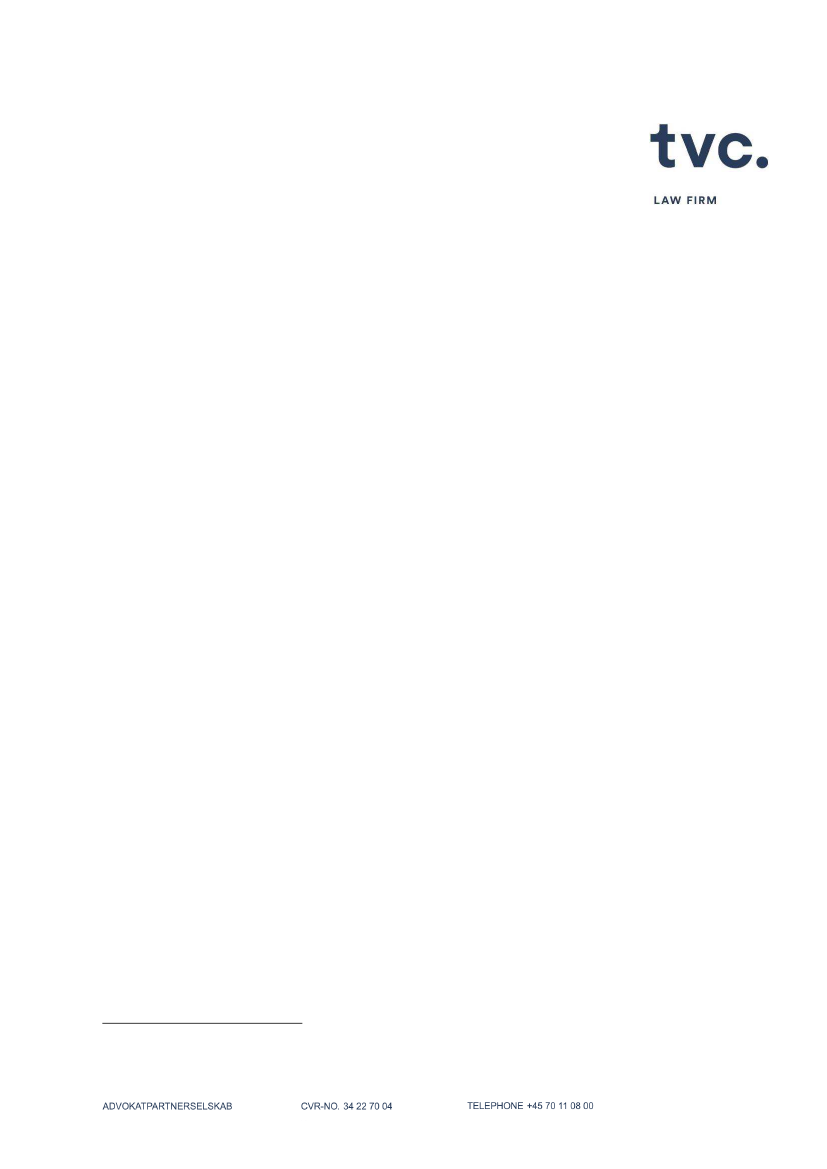
OBSERVATIONS ON THE DANISH ENERGY TICKET MARKET
ATTORNEY AT LAW
1
Introduction
Peter Lunau Larsen
E-mail
Direct
+45 8734 7435
This memorandum points out potential illegal discrimination in the current legal
regulation of the Danish energy ticket market, due to the exclusion of electricity.
SECRETARY
Linda Grentzmann
E-mail
+45 8734 7532
2
Executive Summary
Direct
The Danish Biofuel Act (in Danish: Biobrændstofloven) implements parts of the
Renewable Energy Directive (RED) and the Fuel Quality Directive (FQD).
The Biofuel Act was originally introduced in the Danish parliament and entered
into force in 2009 where, at the time, neither biogas nor electricity played any sig-
nificant roles in the road transport sector. Thus, neither biogas nor electricity were
included in The Biofuel Act when it was adopted.
In 2015, the RED and the FQD were revised to recognise and mitigate the nega-
tive environmental impact that biofuels production can have in terms of indirect
land-use change and related greenhouse gas emissions. Subsequently, the Dan-
ish parliament updated the Biofuel Act on the 15
th
of December 2016 to adjust for
the changes. The 2016-amendment sought a technology neutral approach, which
is stressed twice in the proposal
1
.
The 2016-amendment notes that biogas had entered the road transport sector
since the original Biofuel Act was adopted in 2009. Consequently, biogas suppliers
were included in the provision that covers companies, and thus subject to the
5.75% requirement for the use of renewable energy sources (RES).
AARHUS
Søren Frichs Vej 42A
DK-8230 Åbyhøj
TVC.DK
J.no.
Date
110147
4.7.2019
1
https://www.ft.dk/samling/20161/lovforslag/l67/20161_l67_som_fremsat.htm
PAGE 1 / 8